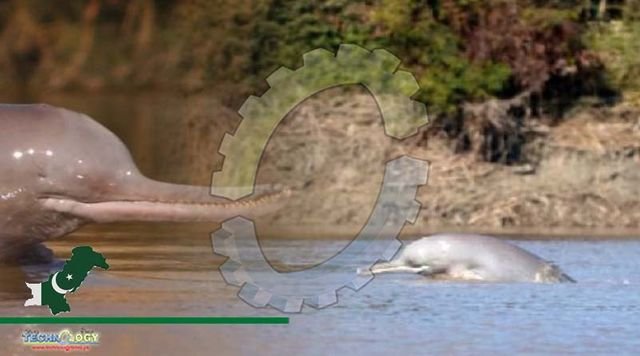Having found a home in naturally muddy waters and subsequently lost their eyesight after millions of years of evolution, the Indus blind dolphins are now putting up a fight against extinction but the mammoth task is not possible alone.

The aquatic mammal has come under severe threat in Pakistan over the past few decades, so much so that the International Union for Conservation of Nature (IUCN) has included the Indus dolphin in its Red Data Book, also known as the Red List for Threatened Species. Wildlife conservationists are of the view that the government has shown little interest in breeding the animal and proof of that is the birth rate of the Indus dolphins which has not increased by more than 8% in the last 30 years. Badar Munir, who works to protect wildlife and the environment in Pakistan, says that the birth rate has not increased for the past three decades due to the increase in water pollution. “The presence of plastic waste, toxic and chemical contaminants in the water is affecting other aquatic life as well as dolphins.”
When asked if illegal hunting was a problem for the dolphins, Munir replied: “There is a ban on hunting dolphins and the ban is not violated. However, when hunters use nets, made of nylon ropes, to catch other fish, dolphins sometimes get caught in them.” Being a mammal, the dolphin has to come to the surface of the water to breathe but when it is trapped in the nylon nets it cannot make the journey to the top, thus it succumbs due to the lack of air. Another reason for the dolphins’ dwindling population, as per experts, is the construction of barrages and link canals on the Indus River, which separates the population from each other; hence, they cannot procreate. Hassan Ali Sukhera, a senior official of Punjab Wildlife who has recently conducted research on the blind dolphins in collaboration with an institute from China on the separation due to construction, informed:
“The total number of blind dolphins in the Indus is 1850. The number of blind Indus dolphins is estimated to be 170 from Chashma Barrage to Taunsa Barrage area, 571 from Taunsa to Guddu, 1,075 from Guddu to Sukkur Barrage and 34 from Sukkur to Kotli.” Whilst this uneven separation of the aquatic mammals is discouraging as per Sukhera, WWF Coordinator Dr Uzma Khan told The Express Tribune that the population of the dolphin has marginally increased. “The last survey conducted in 2017-18 of the blind dolphin population shows that the estimated number of the animals is around 1987.” However, Dr Khan warned that the threat to the species was not over by any means.
Several officials of the Punjab Wildlife agreeing with Dr Khan said that this threat she talks about is actually from the mismanagement of the government. Officials privy to the matter informed The Express Tribune that Punjab Wildlife is responsible for the growth and protection of the blind dolphins as per the Punjab Wildlife Act. However, unlike the Fisheries Department, the Punjab Wildlife does not have any trained personnel to work in the rivers nor does the department have any boats, the officials alleged. Former secretary forest and wildlife, Shahid Zaman, when asked about the government’s initiatives to protect dolphins, informed that in his tenure had set aside 320 million rupees for the protection and rehabilitation of dolphins under the 10 billion tree project. “Under the project, check posts, and awareness boards were to be set up in areas with a dolphin population.. However, work on this project was stopped and I have been transferred.”
Source: This news is originally published by tribune